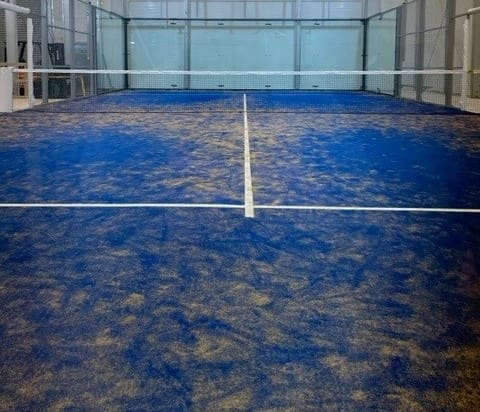
Ready to dive into the world of Padel court surfaces? Whether you’re just getting started or looking to upgrade your game, understanding the right surface can make all the difference. Let’s break it down to get you playing like a pro!
Padel Court Surfaces: The Basics
Artificial grass surfaces for Padel come in two main types: fibrillated or monofilament yarn. Each has its own charm and is suited for different playing styles, from beginners to elite players. According to the LTA, these surfaces should be made in line with the UNE 41958 IN standard.
Key Specs for Surfaces:
Monofilament vs. Fibrillated: What’s the Difference?
Monofilament surfaces usually have a lower pile height, offering a slightly slower speed of play. The silica sand infill adds stability and durability, with texturised fibres keeping the sand in place. This surface is ideal for beginners, providing a consistent ball bounce and a manageable pace to hone your skills.
Fibrillated surfaces, on the other hand, boast a higher pile height and a faster pace of play. They’re durable, with fibres that bounce back to their original position after contact with a player foot or ball. This makes them perfect for intermediate to elite players who thrive on a fast-paced game.
Why Choose Different Surfaces?
Choosing the right surface depends on your club’s players, budget, and style of play. Padel surfaces also come in a variety of colours—from rust and green to blue and purple—adding a splash of personality to your game. According to the LTA guidelines, courts should be single-tone, unlike traditional tennis courts which can mix colours.
Sand Application and Maintenance
Each artificial grass manufacturer has unique guidelines for sand application based on surface height, play speed, and yarn shape. Generally, more sand means slower play, so always follow your manufacturer’s instructions for the best results.
Building Your Court: What to Consider
Constructing a Padel court involves several key considerations:
If you are converting an older artificial grass surface to use for Padel ask us about recycling your old court into your new one using ecocept.
How much does it cost to build a padel court?
On average, building a Padel court costs between £50,000 and £80,000. Costs vary based on groundworks, court specifications, and additional facility requirements.
Helpful Resources
For detailed guidance on constructing Padel courts, check out these links:
Let’s Talk Padel!
Ready to bring your game to the next level? Get in touch with us at Tiger Turf for more info and let’s create the perfect playing surface for you!






